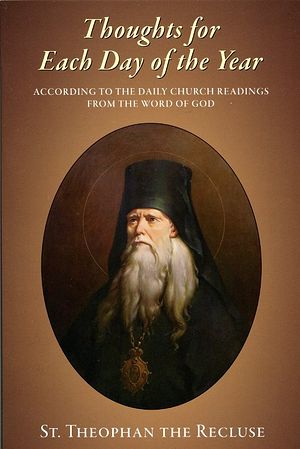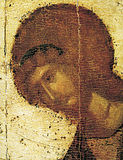

| Previous day | Next day |
| Old Style
March 26
|
Friday |
New Style
April 8
|
|
4th Week of Great Lent.
Tone 3.
Великий пост. |
Monastic rule: xerophagy (bread, uncooked fruits and vegetables).
|
![]() Synaxis of the Archangel Gabriel.
Synaxis of the Archangel Gabriel.
![]() Hieromartyr Irenaeus, bishop of Sirmium (304).
Hieromartyr Irenaeus, bishop of Sirmium (304). ![]() Hieromartyrs Bathusius and Bercus, priests, Monk-martyr Arpilus, and Martyrs Abibus, Agnus, Reasus, Igathrax, Iscoeus (Iskous, Escoes), Silas, Signicus, Sonerilas, Suimbalus, Thermus, Phillus (Philgas), Anna, Alla, Larissa, Monco (Manca), Mamica, Uirko (Virko), Animais (Animaida), Gaatha the queen of the Goths, and Duklida, in the Crimea (ca. 375). St. Malchus of Chalcis in Syria (4th c.). St. Eutychius, subdeacon, of Alexandria (4th c.). St. Basil the Younger, anchorite, near Constantinople (10th c.).
Hieromartyrs Bathusius and Bercus, priests, Monk-martyr Arpilus, and Martyrs Abibus, Agnus, Reasus, Igathrax, Iscoeus (Iskous, Escoes), Silas, Signicus, Sonerilas, Suimbalus, Thermus, Phillus (Philgas), Anna, Alla, Larissa, Monco (Manca), Mamica, Uirko (Virko), Animais (Animaida), Gaatha the queen of the Goths, and Duklida, in the Crimea (ca. 375). St. Malchus of Chalcis in Syria (4th c.). St. Eutychius, subdeacon, of Alexandria (4th c.). St. Basil the Younger, anchorite, near Constantinople (10th c.).
Martyr Codratus (Quadratus), and with him 40 Martyrs, who suffered under Diocletian (284-305). Hieromartyr Eusebius, bishop of Kival, and Martyr Pullius the Reader. Hieromartyr Montanus, priest, and his wife Maxima, at Sirmium (ca. 304). St. Braulio of Saragossa in Iberia (646). St. Ludger, bishop of Munster and missionary to northwestern Germany (809). New Martyr George of Sofia, at Adrianople (1437). St. Stephen the Confessor and Wonderworker, abbot, of Tryglia (815).
Thoughts for Each Day of the Year
According to the Daily Church Readings from the Word of God
By St. Theophan the Recluse

Friday.
The Lord had said unto Abraham: Get thee out of thy country, and from thy kindred, and from thy father’s house, unto a land that I will show thee (Gen. 12:1). This is an explicit image for the change of heart which occurs in true believers, when they sincerely take upon themselves their cross, and follow Christ. They leave their father—selfishness, crucifying it through self-denial; they leave their kindred—their personal sinful leanings, passions and habits, crucifying them through the resolution to follow unswervingly and in all things the passion-slaying commandments of the Lord; they leave their country, the entire sinful realm, the world with all of its demands, crucifying it with the resolution to be alien to it—although for this it might be necessary to endure not only loss of property and social status, but even to endure death itself.
